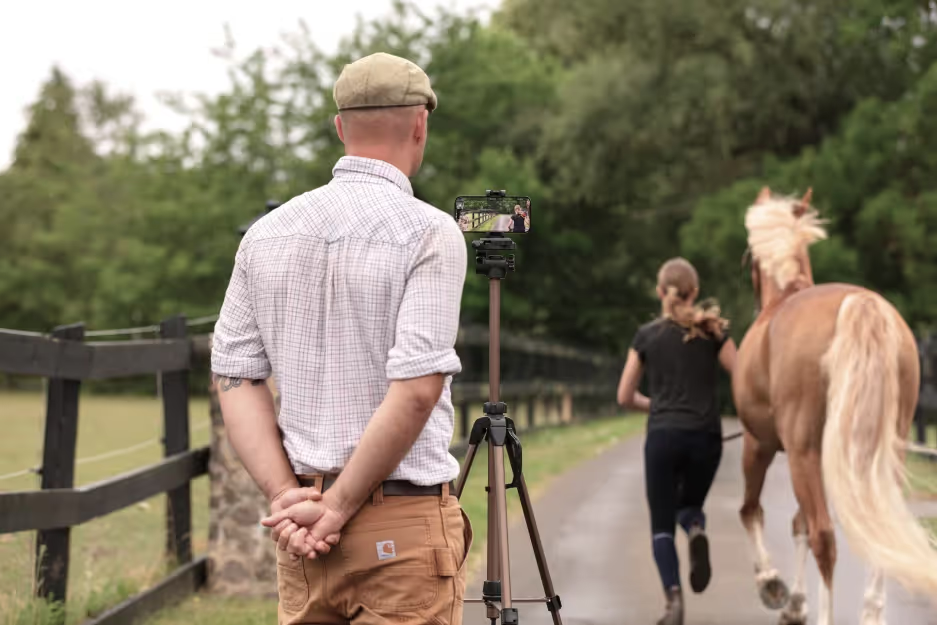
25 June 2024
Veterinarians often use movement asymmetry to assess lameness. That is because the vertical movement asymmetries of the head and pelvis are known to be sensitive measures for fore- and hindlimb lameness (1,2). However, during our years of research into equine biomechanics, as we’ve measured thousands of horses, we have realized that perfect movement symmetry of the head and pelvis is uncommon.
Studies I've conducted with colleagues at SLU and internationally have also shown that many horses perceived as sound (not lame) by their riders still exhibit movement asymmetries.
This raises a crucial question: Does asymmetry always equal pain?
That is, to what extent do motion asymmetry and lameness, caused by pain due to orthopedic disease, represent synonymous conditions? Or, to be more succinct, which of the horses with motion asymmetries are in pain (Fig 1)?

Figure 1 We see a large number of horses with motion asymmetries, but which of these horses are “lame” due to pain?
To investigate this further, my team conducted a study on 222 horses in training perceived as free from lameness [3]. The horses were measured during straight-line trot and longeing with inertial measuring units (Equinosis). A surprisingly high number, 161 (73%), of the horses showed motion asymmetries on the straight line, and many reached asymmetry thresholds typically used for lameness investigations [4, 5]. Interestingly, 90 horses showed concurrent forelimb and hind limb asymmetries on the straight, but it remained unclear if these were compensatory movements or signs of multi-limb lameness [3]. Since this study only assessed the horses once, it couldn't determine when the asymmetries developed or how they changed over time with training. Additionally, as all horses were four years or older, it couldn't be determined if the asymmetry was inherent or developed earlier [3].
Another study I conducted explored the link between asymmetry and pain. Together with my former PhD-student Emma Persson Sjödin we performed analgesic testing on 66 riding horses in training with movement asymmetries [6]. The horses were treated with a placebo and meloxicam (a common pain medication, NSAID) in a crossover design. Surprisingly, there was no significant difference between the NSAID and placebo treatment [6]. This suggests two possibilities: either the movement asymmetries weren't caused by pain, or the NSAID wasn't effective in all cases, potentially due to chronic or neuropathic pain mechanisms [6]. To confirm this, the study was repeated on 24 lame horses. Here, two-thirds did not respond to meloxicam treatment, but many responded to local anaesthesia during lameness workup, confirming pain as the cause of the asymmetry [7].
Another challenge is establishing clear thresholds for when asymmetry indicates lameness.
The challenges of subjective lameness assessments and the lack of agreement among clinicians have been highlighted in numerous studies. In one such study, 86 veterinarians evaluated videos of longeing horses. This task proved particularly challenging, with the lowest inter-rater agreement, meaning vets disagreed most often, on whether the horses were sound or lame [9]. Similarly, in a study by Pfau et al. [10] six experienced clinicians assessed videos of 25 Thoroughbreds trotting in a straight line. Only in two videos did all clinicians agree the horse was sound. In the remaining 23 videos, there was disagreement, but at least one veterinarian considered each horse sound.
Several studies I've participated in have found a high prevalence of movement asymmetries in various horse populations, including polo horses [11] and thoroughbreds [12]. This could be related to training or early signs of injuries. To investigate if asymmetries are inherent or develop early, I studied young foals and yearling Standardbreds, where asymmetries were also common [13, 14]. Other potential explanations, like natural variations in "handedness" (motor laterality), were explored but haven't yielded conclusive results [15].
It's important to consider other causes of movement asymmetry besides pain. For example, moving in a circle naturally induces asymmetries in sound horses [16], and even slight limb length differences can contribute [17].
With pain not always being the culprit, establishing thresholds for abnormal asymmetry remains difficult [18]. In some horses, very subtle asymmetries are linked to pain, while others seem to have consistent asymmetries unaffected by training or rest.
The way forward seems to be in monitoring your horse's gait pattern over time. This is now possible with new techniques developed by companies like Sleip, which allows you to capture asymmetry data using only a smartphone [19]. By tracking gait changes, you can gain valuable insights:
-------------------------------------------------------------------------------------------------------------------